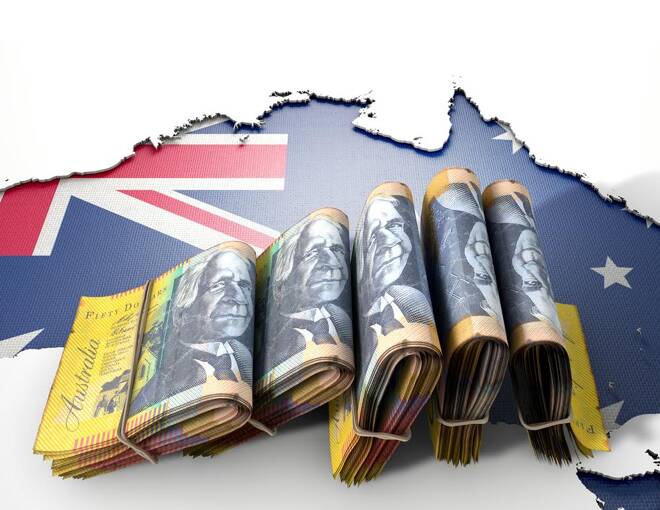Advertisement
Advertisement
AUD/USD and NZD/USD Fundamental Daily Forecast – Settle Higher, but Volatility Remains on Horizon
By:
The AUD/USD and NZD/USD closed higher on Friday, an upbeat conclusion to a whipsaw week of buying and selling as signs of a rebounding economy squared off against mounting inflation jitters.
The Australian and New Zealand Dollars closed higher on Friday, taking back some of their earlier-in-the-week losses, as the U.S. Dollar gave back some of its gains as investors weighed the risk of U.S. inflation rising faster than expected and prodding the Federal Reserve to alter monetary policy by beginning the process of tapering bond purchases or hiking interest rates sooner than anticipated.
On Friday, the AUD/USD settled at .7783, down 0.0061 or -0.78% and the NZD/USD finished at .7249, down .0034 or -0.46%.
Sellers took a breather on Friday, but the Aussie and Kiwi still closed lower for the week. Most of the strength in the Forex pairs was fueled by a weaker greenback after a strong reading on U.S. producer prices and weekly jobless claims on Thursday failed to spark a renewed uptick in Treasury yields, which some traders read as the market already pricing in a degree of inflation worries.
Additionally, the Federal Reserve has been sticking to its script that its stimulus will be in place for some time to support the economy, with officials viewing a spike in inflation as reported on Wednesday as “transitory”.
Friday’s strength in the Australian and New Zealand Dollars was mostly fueled by a drop in U.S. Treasury yields, triggered after retail sales data for April showed no growth after a big jump in March.
U.S. Economic Data Fuels Whipsaw Response, Leading to Lower Weekly Close
The AUD/USD and NZD/USD closed higher on Friday, an upbeat conclusion to a whipsaw week of buying and selling as signs of a rebounding economy squared off against mounting inflation jitters.
U.S. retail sales unexpectedly stalled in April as the boost from stimulus checks faded, but an acceleration is likely in the coming months amid record savings and a reopening of the economy.
The Commerce Department said on Friday the unchanged reading in retail sales last month followed a 10.7% surge in March, an upward revision from the previously reported 9.7% increase. Economists polled by Reuters had forecast retail sales would rise 1.0%. Economists polled by Dow Jones had expected a more modest 0.8% increase.
On Thursday, a government report showed U.S. producer prices rose 0.6% in April after surging 1.0% in March. In the 12 months through April, the PPI shot up 6.2%. That was the biggest year-on-year rise since the series was revamped in 2010 and followed a 4.2% jump in March.
In a separate report, the number of Americans filing new claims for unemployment benefits dropped to a 14-month low of 473,000.
The strong data, coming after a stunning jump in consumer inflation announced on Wednesday, added to the evidence inflationary pressure is building up in the United States as vaccine rollouts prompts economic normalization.
More Volatility on the Horizon
“Inflation will remain a big theme for markets in the coming few months. The Fed says it will be transitory but markets are asking “what if it turns out not to be transitory,” said Seiya Nakajima, chief economist at Office Niwa.
For a look at all of today’s economic events, check out our economic calendar.
About the Author
James Hyerczykauthor
James Hyerczyk is a U.S. based seasoned technical analyst and educator with over 40 years of experience in market analysis and trading, specializing in chart patterns and price movement. He is the author of two books on technical analysis and has a background in both futures and stock markets.
Advertisement
